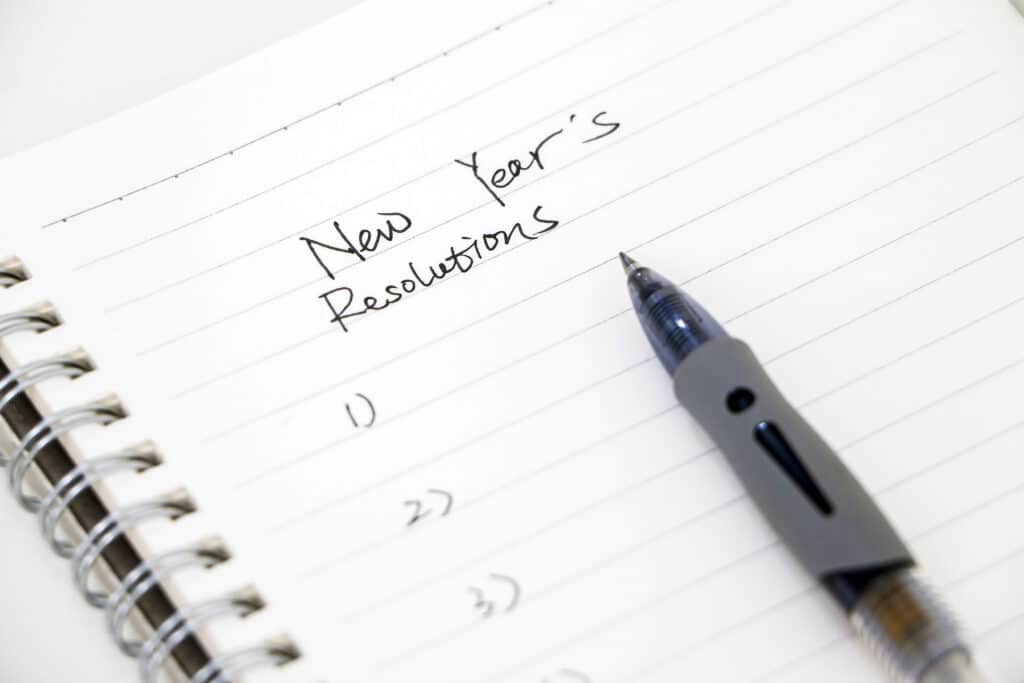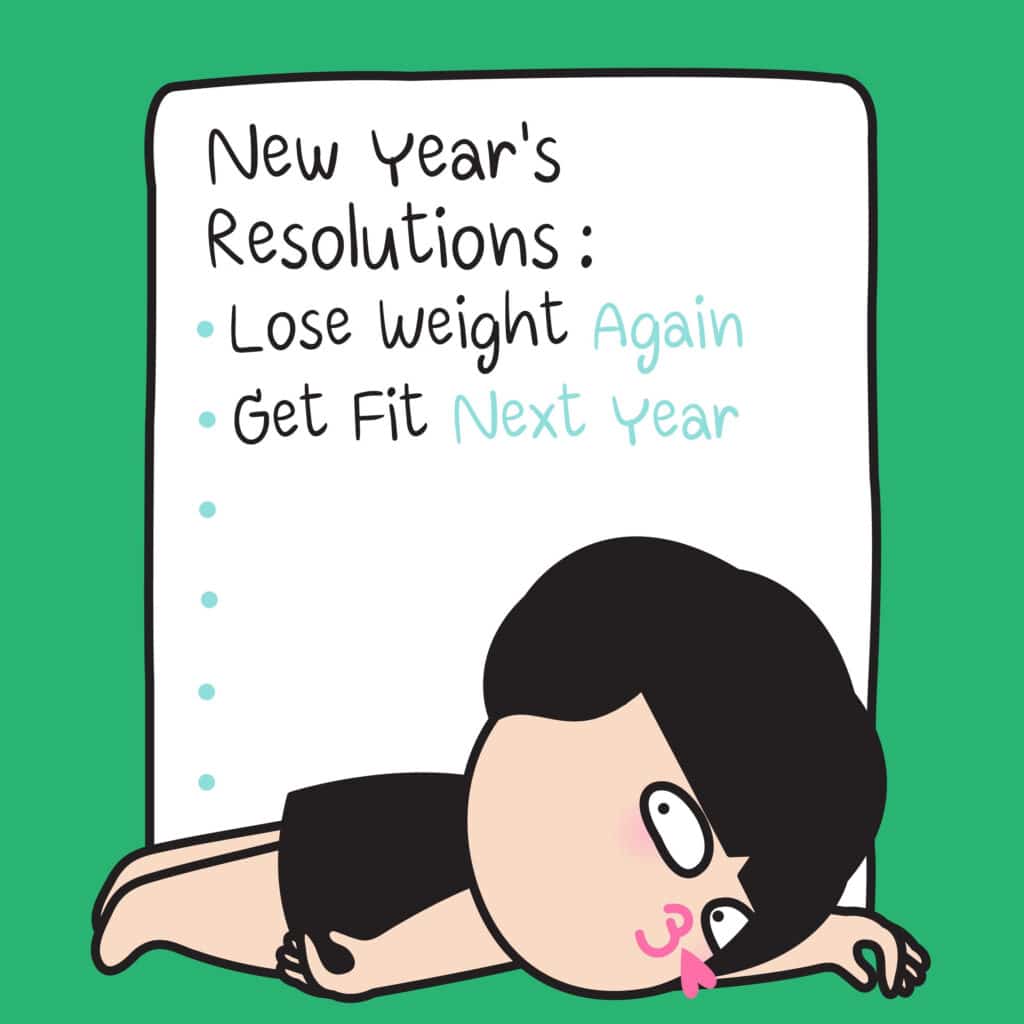We do it every year, even if we don’t keep them. But why? What’s the story behind making New Year’s resolutions, and what are the best ones to make?
Today’s New Year’s resolutions
Every time we get to the end of a year, we say goodbye to that year and prepare for the next. In doing so, we have a tradition of making some statement about what we’re going to do in the upcoming year. We call these statements, resolutions. As in, something we now resolve to do in the new year.
Maybe its to hit the gym more, or keep to a diet. Maybe its to quit a bad habit like drinking or smoking; or to institute a new good habit, like to read a book a month. Maybe its to spend more time with children or other family members, to not work too hard, or maybe to work harder. It could be about spending less, making plans for something that has seemed difficult to plan for, to finally end a bad relationship, or to start putting time into a soup kitchen.
Whatever it is, its something we feel will be an improvement in some way. Very few people specifically make a negative resolution, and I’ve yet to hear of a person decidedly trying to start a bad habit. I vowed once I’d party more, but it was really about wanting to increase social interaction in a new situation. Most resolutions carry some desire for improvement on a personal level.
We have no taskmaster for these resolutions. Unlike the things we say we’ll do at work, no one is keeping tabs on whether we keep these resolutions, or not. They’re personal goals, and we decide whether we want to fulfill them, or leave them as just another thing to think about, but not do. There are jokes about setting a new resolution, to fulfill previous year’s unfulfilled resolutions. The reality is, many of us give up on whatever it is, before January ends.

Babylonia started the tradition of New Year’s resolutions
Where does this idea of making a statement about our future actions, come from? The earliest example in recorded history of something similar to today’s antics, comes from ancient Babylonia. Back in 2,000 BC, the Babylonians had their own tradition that included making resolutions for the new year.
The Babylonians didn’t get together with friends and make drunken statements about their proposed accomplishments for the next year. Instead, they celebrated the new year in a 12-day festival called Akitu. Akitu started at the vernal equinox, which is when the day and night are the same length in spring. We celebrate New Year’s based on the Gregorian Calendar, but back then, such things had not been implemented; and cultures used astronomy-based calendars.
The Babylonian new year signified the start of the new growing season after winter; and is when farmers planted their crops. At this time, new kings were crowned, and people made promises to pay back their debts. It’s this last part which connects to our tradition of today. The idea of making a promise to do better on something, which in the case of Babylonians, meant paying what they owed. The whole idea was for their good behavior to attract a favorable response from the gods for the new farming season.
Debts included anything meant to go back to another person. In Babylonian culture, this could mean the return of borrowed farming equipment; and did not have to be specifically about the transfer of money. As farming-based communities, something like the return of needed equipment was a big deal, and a big reason for resolutions.
During this time, beyond making promises to give back what wasn’t theirs, the Babylonians had parades where they carried statues of their gods through the streets, and enacted rites meant to show a victory over chaotic forces.
Romans, and a change in resolutions
Nothing stays the same forever. Cultures changed over time, or were taken over by other cultures. As it happens, the Romans adopted this same idea of resolutions from the Babylonians, but changed things around a bit. Including the calendar itself, and when such resolutions were made.
Though the Romans also started by celebrating around the time of the vernal equinox – they did it on the 15th of March. That day is the 74th day from the beginning of the Roman calendar, and dubbed the Ides of March. When New Year’s was still practiced in March, this was also the time when Rome’s most important officials – called Consuls, took their seat in office.
This coincided with another Roman festival at the time, the festival of Anna Perenna. The Italian goddess represented both spring and the new year; and the celebrations also took place on March 15. In terms of the old Roman lunar calendar, this marked the first full moon of the year.

This changed over the years, though. In the year 46 BC, the Julian calendar was instituted via Julius Caesar, and the date for the new year became January 1st, same as today. The change of date was specifically meant to honor the god Janus. Janus represents the past and the future, as a two-faced god. The death of one year, and the birth of a new one. Doors, archways, thresholds and transitions are also associated with him.
Romans promised good behavior for the upcoming year. They made sacrifices to Janus, and reaffirmed their relationship with other citizens, with Rome, and with the gods. This was also a time to pledge loyalty to the emperor, and exchange blessings and gifts, like fruit or honey.
How the Middle Ages did resolutions
In the height of the Middle Ages, from 500-1500 AD, New Year’s resolutions were associated with Knights. Each new year they’d pledge their allegiance to their country and sovereign, and renew their vows of chivalry and valor.
There is folklore of something called “The Vow of the Peacock” or “The Vow of the Pheasant.” This involved the knights making their vow while placing their hands on either a live or roasted pheasant. According to the legend, this happened during the last of the Christmas feasts, and the pledge would be for their chivalrous service for the next 12 months. It got a mention in Charles Dickens’ All the Year Round. Dickens points out that these birds were held in high esteem, and symbolized kings and nobility.
He says in his book, “But it was on the day when a solemn vow was made that the Peacock (or Pheasant) became the great object of admiration,” and that “It was presented to each in turn, and each made his vow to the bird, after which it was set upon a table to be divided amongst all present, and the skill of the carver consisted in the apportionment of a slice to every one.”
Even at this time, when the new year started was still not necessarily accepted by all. Different local societies held New Year’s celebrations at different times of year back then. This was not helped by an error in the original Julian calendar, which led to extra days in the year. Supposedly seven by the year 1,000. This might have confused when the date was supposed to be; and was one of the reasons for the institution of today’s Gregorian calendar. This changeover happened in 1582, under Pope Gregory XIII.
More recently…
Obviously, there’s still quite a gap between the knightly tradition of the Middle Ages, and our free-for-all of promises that we go through every year in modern times. Up until and through the Middle Ages, one of the main differences to today, was that all these pledges, whether by knights or ordinary people, were done as religious gestures. This continued into the 19th century, when it was customary to make New Year’s pledges related to religion, spirituality, and being a good person.
However, also by the 1800s, it had become a bit of a joke as well. An 1802 article in the Walker’s Hibernian Magazine satirically stated, “Statesmen have resolved to have no other object in view than the good of their country.”

By this time it was already customary to throw out a lot of random notions about all the ways a person would do better in the upcoming year. But, as we know from today, setting a New Year’s resolution based on the desire to do something, is often not enough. If we’re having an issue getting something done most of the time, simply setting a resolution because it’s New Year’s, likely isn’t going to change anything.
Not much has changed from the 19th century on this front. Maybe just that resolutions have gotten further away from the ideas of religion and being a better person in society; to rest more in the vein of self-improvement, and vanity. One thing for sure is, the idea of offering gods a sacrifice and promising to be good in order for crops to grow, is no longer relevant.
So what are the best New Year’s resolutions to make? Unfortunately there is no specific answer to that question. Perhaps if you’re really into the whole thing and want to do it right; the best New Year’s resolutions to consider, are simply the ones you can realistically keep.
Conclusion
It’s good to have goals, no doubt. So whatever goals you set yourself for the new year, here’s hoping you achieve them.
Welcome all, and thanks for making your way to Cannadelics.com. We’re an independent publication centered on drugs and wellness; here to bring you the best stories of today. Don’t be a stranger, come around frequently for news and commentary. And sign up for the Cannadelics Weekly Newsletter; so you always know what’s going down









